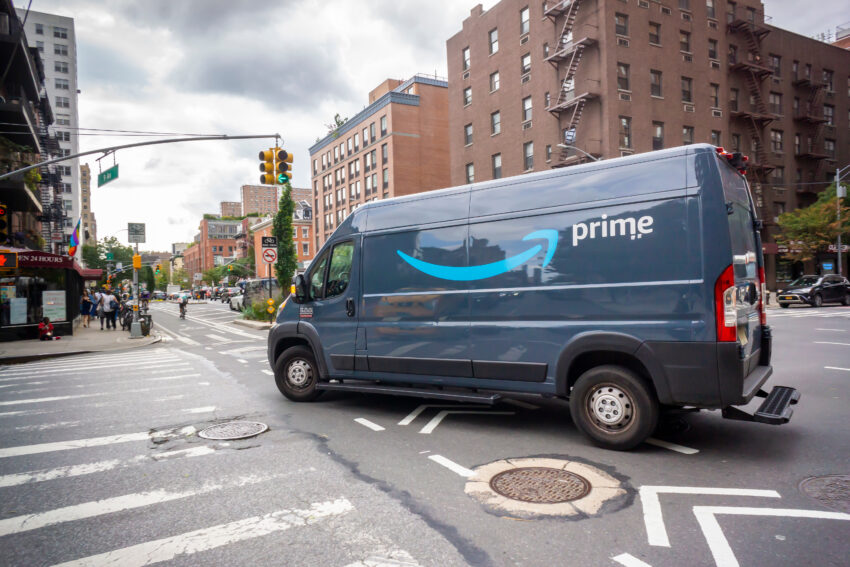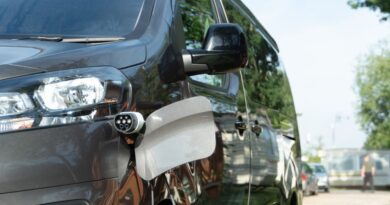Amazon to add 700 e-lorries to UK fleet to cut pollution in £300M pledge
Amazon will put 700 electric heavy goods vehicles on the UK’s roads in the next five years, it will announce today.
In an effort to reduce its carbon footprint the online retailer will pledge to inject £300 million into transforming its fleet. It already uses five e-HGVs in the UK. Across Europe the business will announce a package of €1 billion for more than 1,500 of the vehicles.
The new fleet is designed to considerably lessen the environmental damage of delivering parcels. Amazon has more than a thousand electric vehicles aiding the “last mile” of delivery, but it relies on diesel for long-distance transport.
Andy Jassy, the chief executive, said: “Deploying thousands of electric vans, long-haul trucks and bikes will help us shift further away from traditional fossil fuels. [It will] hopefully further encourage transportation and automotive industries in Europe and around the world to continue scaling and innovating, as we will have to work together to reach our climate goals.”
To power its e-HGVs the company plans to build hundreds of fast chargers at its European and UK warehouses, allowing it to charge the vehicles in approximately two hours.
There are only 313 electric lorries registered in the UK, according to the latest data from the Society of Motor Manufacturers and Traders. In Europe statistics from the market analysis group IHS Markit show that 346 electric lorries were registered in Europe last year, an increase of 193 per cent from 2020.
Amazon’s plans were welcomed by the government. Anne-Marie Trevelyan, the transport secretary, said: “Significant investments like Amazon’s today will be vital to reducing emissions and meeting our net-zero goals while supporting growth at the same time.
“By adding thousands of electric and zero-emission vehicles to its fleet Amazon is not only working to make their deliveries more sustainable but also stimulating innovation across industry in the drive to cleaner transport.”
This year the company said that it would pump more than £200 million into a zero-emission road freight programme. Under the plans vehicle manufacturers, energy suppliers and fleet operators have been asked to demonstrate their technology with the aim of introducing hundreds more zero-emission HGVs across the country.
Online shopping surged in popularity during the pandemic, dramatically increasing the number of delivery vehicles on the roads. The switch to internet shopping peaked with 37 per cent of all retail sales being conducted online in January last year, according to the Office for National Statistics.
As lockdown restrictions eased, however, shoppers began to drift back to traditional bricks-and-mortar retailers. By this summer internet sales accounted for only 27 per cent of all retail sales. In February 2020 it accounted for less than 20 per cent of total sales.
In February Tesco said that it was introducing its first fully electric 18-tonne HGV, which can operate free in London’s ultra-low emission zone and congestion charge zone. The Renault refrigerated vehicle delivers from a distribution centre in Dagenham to more than 400 shops in London. More of the vehicles are planned.
Amazon has invested large sums into transforming its “last-mile” deliveries, where packages are moved from HGVs to smaller, more eco-friendly vehicles. Amazon has more than 3,000 small electric vans across Europe and with the latest investment it expects to grow its fleet to more than 10,000 by 2025.
It also has “micro-mobility hubs” in more than twenty cities across Europe, including London. It plans to double the number by the end of 2025 to use more e-cargo bikes and on-foot deliveries in densely populated cities. It also says that drones will be able to fly packages weighing up to 5lb as far as 15 miles in the coming years.






